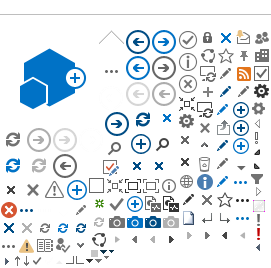Nuclear Magnetic Resonance (NMR) Spectrometer
NMR spectroscopy is a powerful analytical tool that utilizes the magnetic properties of atomic nuclei in a sample to provide detailed information about chemical structure, dynamics, reactions, and molecular interactions. It is widely used in fields like organic chemistry, biochemistry, and materials science.
Applications of NMR
Drug Development: Mapping binding sites by analyzing how a drug binds to its target protein.
Chemical Synthesis Monitoring: Verifying the purity and structure of synthesized products.
Biological Systems: Investigating enzyme mechanisms and protein-ligand interactions.
Key Applications of NMR
Chemical Structure Determination: Identification of the structure of organic and inorganic compounds, detection of molecular bonds and functional groups.
Biomolecular Research: Analysis of the three-dimensional structures of proteins, nucleic acids, and carbohydrates.
Dynamic Studies: Investigating molecular motions, bond transformations, and reaction kinetics.
Mixture Analysis: Detection of individual components in complex mixtures.
Materials Science: Analysis of polymers, battery materials, and complex solid structures.
Types of NMR Experiments
1D NMR (One-Dimensional): Used for simpler analyses (e.g., ¹H, ¹³C, ¹⁵N, ¹⁹F, ³¹P, ¹⁹⁵Pt, ¹¹B).
2D NMR (Two-Dimensional): Used for more complex structural analyses.
COSY: Shows spin-spin interactions.
HSQC: Detects heteronuclear correlations.
NOESY: Provides spatial proximity information.
DOSY: Measures the diffusion coefficients of molecules.
Quantitative NMR (qNMR)
qNMR is a technique used to precisely and accurately determine the quantity of a substance in a sample by correlating the NMR signal intensity to the concentration. It relies on the principle that the signal intensity is directly proportional to the number of nuclei in the sample, making it ideal for quantification.
Applications of qNMR
Pharmaceutical Industry: Measuring concentrations and purity of Active Pharmaceutical Ingredients (APIs).
Food and Cosmetics Analysis: Quantifying food additives and cosmetic ingredients, particularly plant extracts and natural products.
Biotechnology: Quantifying proteins, nucleic acids, and other biomolecules.
Organic Chemistry: Purity analysis and quantity determination of newly synthesized compounds.
Petrochemicals and Polymer Science: Analyzing polymer composition and measuring monomer concentrations.
Equipment: Bruker Avance NEO 500 MHz NMR

Specifications:
| Magnet; Superconducting 500 MHz, Bruker AscendTM
Console; Avance NEO 500
Software; Topspin 4.2.1
Automatic sample changer SampleXpress for 60 samples |
Services:
¹H NMR Measurement: Proton NMR to analyze hydrogen environments in molecules.
¹³C - APT NMR Measurement: Carbon-13 NMR with attached proton test (APT) for detailed carbon-hydrogen relationships.
¹¹B NMR Measurement: Boron-11 NMR for studying boron-containing compounds.
¹⁵N - ¹⁹F - ³¹P - ¹⁹⁵Pt NMR Measurements: Nitrogen-15, Fluorine-19, Phosphorus-31, and Platinum-195 NMR for studying various nuclei in specialized compounds.
¹H and D2O Exchange Measurement: Proton NMR with deuterium oxide exchange to study exchangeable protons (such as those in alcohols or amines).
DEPT NMR Measurement: Distortionless Enhancement by Polarization Transfer (DEPT) NMR to distinguish between different types of carbon (e.g., CH, CH2, CH3).
COSY NMR Measurement: Correlation spectroscopy (COSY) for detecting spin-spin interactions between protons.
HMBC NMR Measurement: Heteronuclear Multiple Bond Correlation (HMBC) for long-range correlation between protons and heteronuclei.
HSQC NMR Measurement: Heteronuclear Single Quantum Coherence (HSQC) for direct correlation between protons and heteronuclei (such as ¹³C or ¹⁵N).
NOESY NMR Measurement: Nuclear Overhauser Effect Spectroscopy (NOESY) to provide spatial proximity information between nuclei.
DOSY NMR Measurement: Diffusion Ordered Spectroscopy (DOSY) to measure the diffusion coefficients of molecules.
qNMR Experiments: Quantitative NMR (qNMR) for precise quantification of components in a sample.
